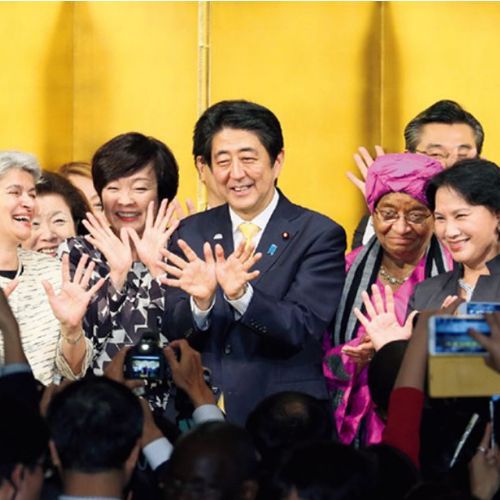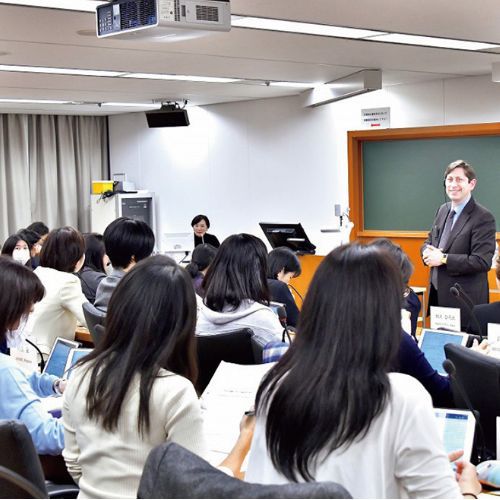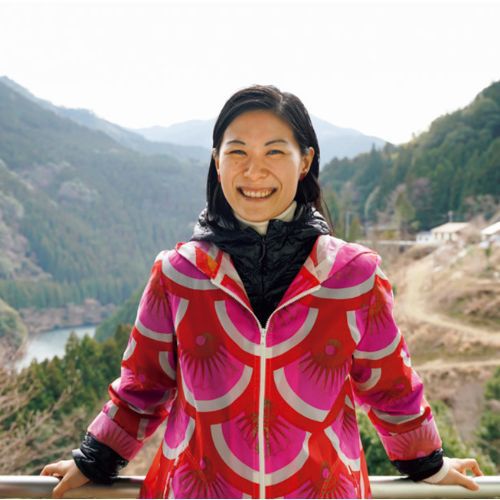Lin Kobayashi is the founder of UWC ISAK Japan, which is gaining a reputation as a center of learning for change-makers. What is a “society where women shine” as imagined by her?
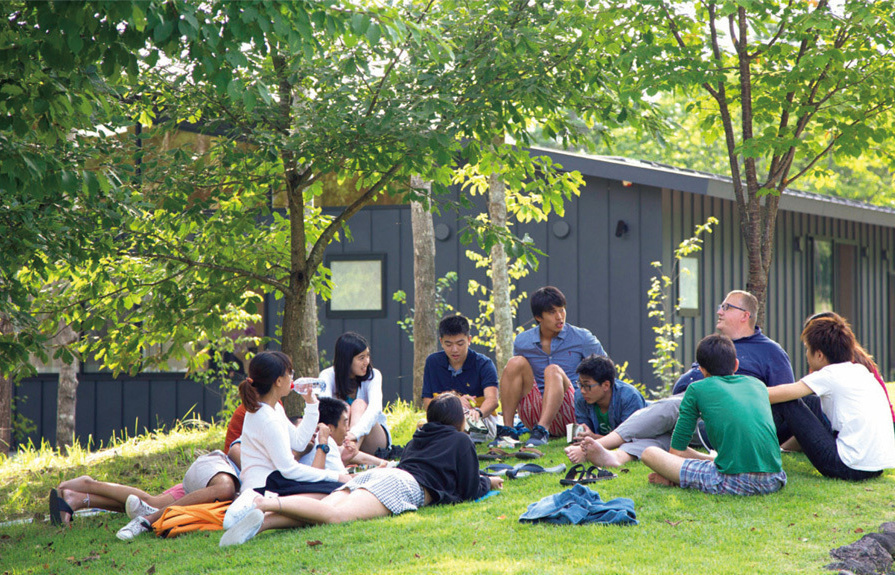
Set in natural surroundings, the 17th United World College (UWC) and the first to receive school accreditation in Japan encourages students to grow.
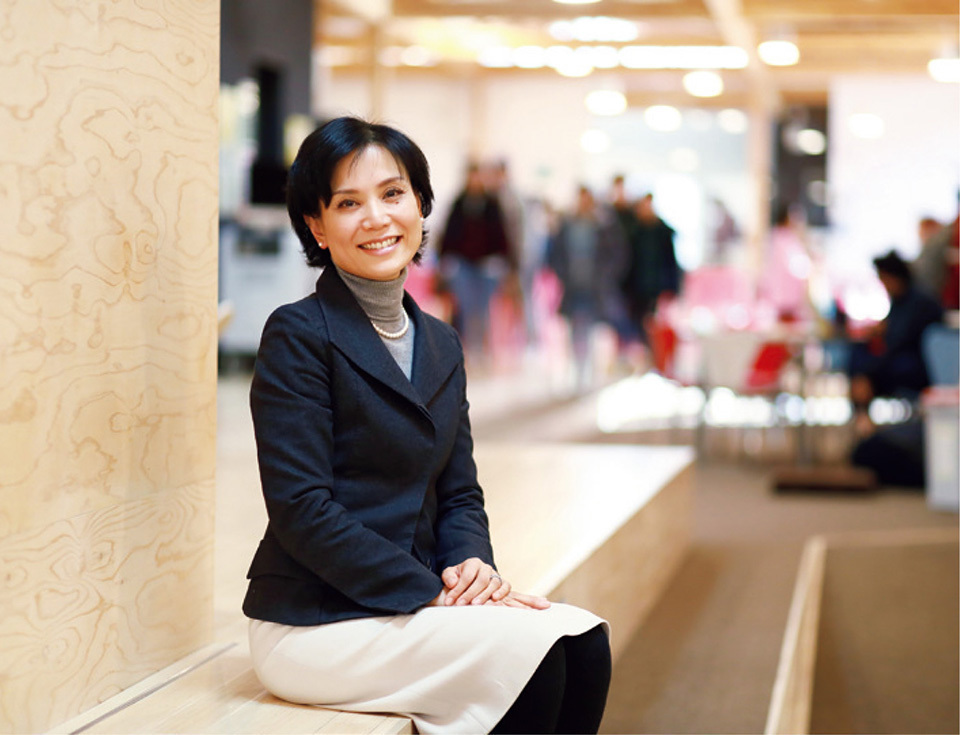
Lin Kobayashi, chair of the board of UWC ISAK Japan. Graduated from Pearson College UWC in Canada in 1993 and from School of Economics, University of Tokyo in 1998. Obtained Master’s in International Education Policy Analysis, Stanford Graduate School of Education in 2005. After working in a financial institution, and the Japan Bank for International Cooperation, she worked for UNICEF in the Philippines in 2006. In 2012, she was chosen as a Young Global Leader by the World Economic Forum.
In the Karuizawa Plateau, Nagano Prefecture, against the backdrop of the beautifully undulating Mt. Asama, is the international boarding school UWC ISAK Japan, at which about 190 students from 73 countries attend. The school equips its students with the makings to become leaders who can shape our future world by instilling a mutual knowledge and understanding of each other, as their countries, cultures and economies vastly differ.
The educational philosophy of the school is to empower students to become “change-makers” who can bring positive change to society. That reflects the ideas of Lin Kobayashi, founder and chair of the board. Having traveled alone to Canada to study at a boarding high school, it was her dream to help make a better world beginning with education for the poor. After much effort, she began working with UNICEF in educational assistance for children in poverty. Then, with an aim to help make even bigger changes to society, she realized that it was essential to not just provide education to people living in poverty but also to raise leaders and empower them to make positive changes in many areas of society. While working hard to establish the school, she encountered numerous difficulties. “An important lesson for any change-maker is that the power to overcome difficulties comes from learning to make your own future rather than blaming your environment or circumstances,” advises Kobayashi.
Kobayashi, who is both a social entrepreneur and an internationally active leader, explains how an organization with a woman at the top can establish a culture in which various people, both women and men, find it easy to work. “About 90% of the school staff and more than half of the teachers are women, many of who are working while raising children of their own. I myself am a mother of two children. After our staff saw me standing on stage in a TED talk with a pregnant belly, it became commonplace for a staff member to bring her child to work. We have even had a male teacher who juggled teaching a class, bottle-feeding a baby and pushing a stroller, all at once.”
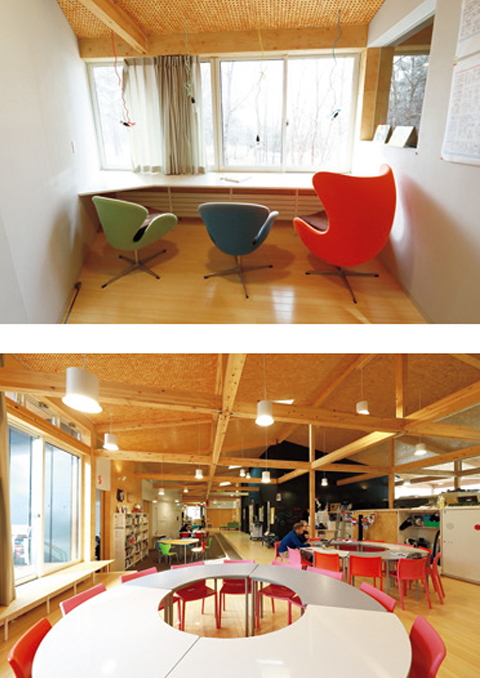
The library/learning space was designed on the concept of “learning everywhere.” All the classrooms encircle this central area. From the windows, students can gaze at a beautiful forest. Following Japanese custom, everyone removes their shoes before entering.
If female entrepreneurs increase, such a culture would spread throughout society. That phenomenon may even contribute to achievements of the Sustainable Development Goals (SDGs), which are being carried out on a global scale. With such a powerful thought in mind, Kobayashi has launched a project for supporting female entrepreneurs. In the future, she aims to promote activities targeting junior-high and high school students. “I think our generation’s role is to create the right environment to encourage female entrepreneurs. I envisage a future where ‘entrepreneur’ has become the most popular job among female junior-high and high school students,” she says. Society may change in various positive ways when more and more women become entrepreneurs like her.


























